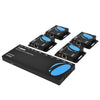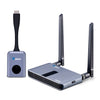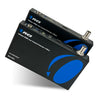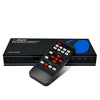
A well-designed video wall can be a powerful tool to enhance presentations, events, or retail spaces. But with so many options and factors to consider, creating an effective multi-screen display setup can be challenging. This guide provides practical advice on building a video wall that will captivate your audience. We'll cover topics such as choosing the right video wall controller, ensuring seamless content delivery, and overcoming common challenges.
In this guide, we’ll explore tips and best practices to help you create a stunning multi-screen display.
Choosing the Right Video Wall Controller
The backbone of any successful video wall is its video wall controller. This essential device manages the input sources and distributes content across multiple displays, ensuring that your visuals are seamless and engaging. A high-quality controller allows you to handle various input types — like HDMI, DisplayPort, and even streaming content—simultaneously, giving you the flexibility to showcase diverse media.
Additionally, a good controller minimizes lag and distortion, which is crucial for maintaining the overall quality of your visual presentation. Investing in a reliable controller not only improves performance but also provides essential support and updates, ensuring your system remains current and capable of integrating new technologies as needed.
When evaluating controller video wall options, consider the following factors:
- Input and Output Options: Ensure that the controller can handle the variety of input sources you plan to use, such as computers, cameras, or streaming devices. It should also support the number of outputs needed for your display arrangement.
- Resolution and Scaling: Look for a video wall controller that supports high resolutions, especially if you plan to display 4K content. The ability to scale video appropriately is essential for maintaining quality across all screens.
- User Interface: A user-friendly interface can make a significant difference when setting up a video wall for your event or home theater setup. Choose a controller with intuitive software that allows for easy configuration and content management.
- Networking Capabilities: If you need to manage your video wall remotely or integrate it with other systems, ensure that the controller has networking capabilities. This can facilitate easier updates and content changes.
- Compatibility: Make sure that the controller is compatible with the displays you plan to use. Some controllers may have limitations on certain brands or models.
By carefully selecting a video wall controller that meets your needs, you can set the stage for a successful video wall setup that captivates your audience.
Ideal Display Arrangement and Placement

Once you have chosen the right video wall controller, the next step is determining the arrangement and placement of your displays. The layout of your multi-screen display is critical to achieving the desired visual effect and functionality.
- Consider the Viewing Distance: The optimal arrangement will depend on the distance from which viewers will be watching the video wall. For closer viewing distances, consider using a tiled layout with smaller bezels to create a more immersive experience. For larger spaces, a standard layout with larger screens may suffice.
- Display Size and Configuration: Choose displays that are suitable for your intended purpose. Larger displays are ideal for high-traffic areas, while smaller displays may work well in intimate settings. Think about the configuration as well; a 2x2 layout is common, but a 4x1 or 3x1 layout can create a unique visual experience as well.
- Mounting Options: Consider whether you will be mounting the displays on walls or using stands. Wall-mounted displays save space and provide a cleaner look, while stands allow for flexibility in arrangement. Ensure that the mounting hardware is robust and can support the weight of the displays.
- Environmental Factors: Be mindful of environmental conditions such as lighting and temperature. Avoid placing displays in direct sunlight, which can cause glare and affect visibility. Additionally, ensure that there is adequate ventilation to prevent overheating.
- Accessibility: Arrange the displays so that they are easily accessible for maintenance or adjustments. This consideration can save time and effort in the long run, especially if you need to change cables or perform updates.
Taking the time to plan the ideal display arrangement and placement will greatly enhance the overall effectiveness of your video wall.
Ensuring Seamless Video Playback
Once your video wall controller and display arrangements are in place, the next priority is ensuring seamless video playback. Smooth playback is crucial for maintaining audience engagement and delivering a professional presentation.
- Test Your Setup: Before going live, conduct thorough testing of your video wall setup. Check for any lag, flickering, or resolution issues that might detract from the viewer's experience. Adjust the settings on your video wall controller as necessary to optimize performance.
- Content Management: Use reliable content management software that allows you to schedule and organize content efficiently. The best AV for video walls will include tools that enable you to easily switch between different sources and types of content, from videos and images to live feeds.
- Monitoring Performance: Continuous monitoring of your video wall during operation is vital. Consider using software that provides real-time diagnostics to help you quickly identify and address any issues that arise.
- Optimize File Formats: Ensure that your video files are optimized for the displays in use. Using the right codecs and resolutions can help prevent playback issues. Test various file formats to determine which works best for your specific setup.
- Update Software Regularly: Regularly updating the software for your video wall controller and content management system can help ensure optimal performance. Software updates often include enhancements, bug fixes, and new features that can improve your setup.
By focusing on these aspects, you can ensure a smooth and visually captivating experience for your audience.
Setting up a video wall is an excellent way to enhance your presentations, advertising, or immersive experiences. By choosing the right video wall controller, arranging your displays effectively, and ensuring seamless playback, you can create a stunning visual display that captivates and engages your audience.
At OREI, we offer the best video wall controllers, providing a range of high-quality devices designed to meet your specific needs. Our solutions ensure optimal performance and an engaging viewing experience. Explore our selection today to find the perfect setup for your next project.
| Product | 2x2 Video Wall w/ USB-C | 2x2 Video Wall | 4x4 Video wall control w/ Multiview functionality | 4x4 Matrix (2x2 Video wall) | Professional 4x4 Matrix (2x2 Video wall) | 8x8 Matrix (4x2 Video wall) | Professional 8x8 Matrix (4x2 Video wall) |
|---|---|---|---|---|---|---|---|
| Image | 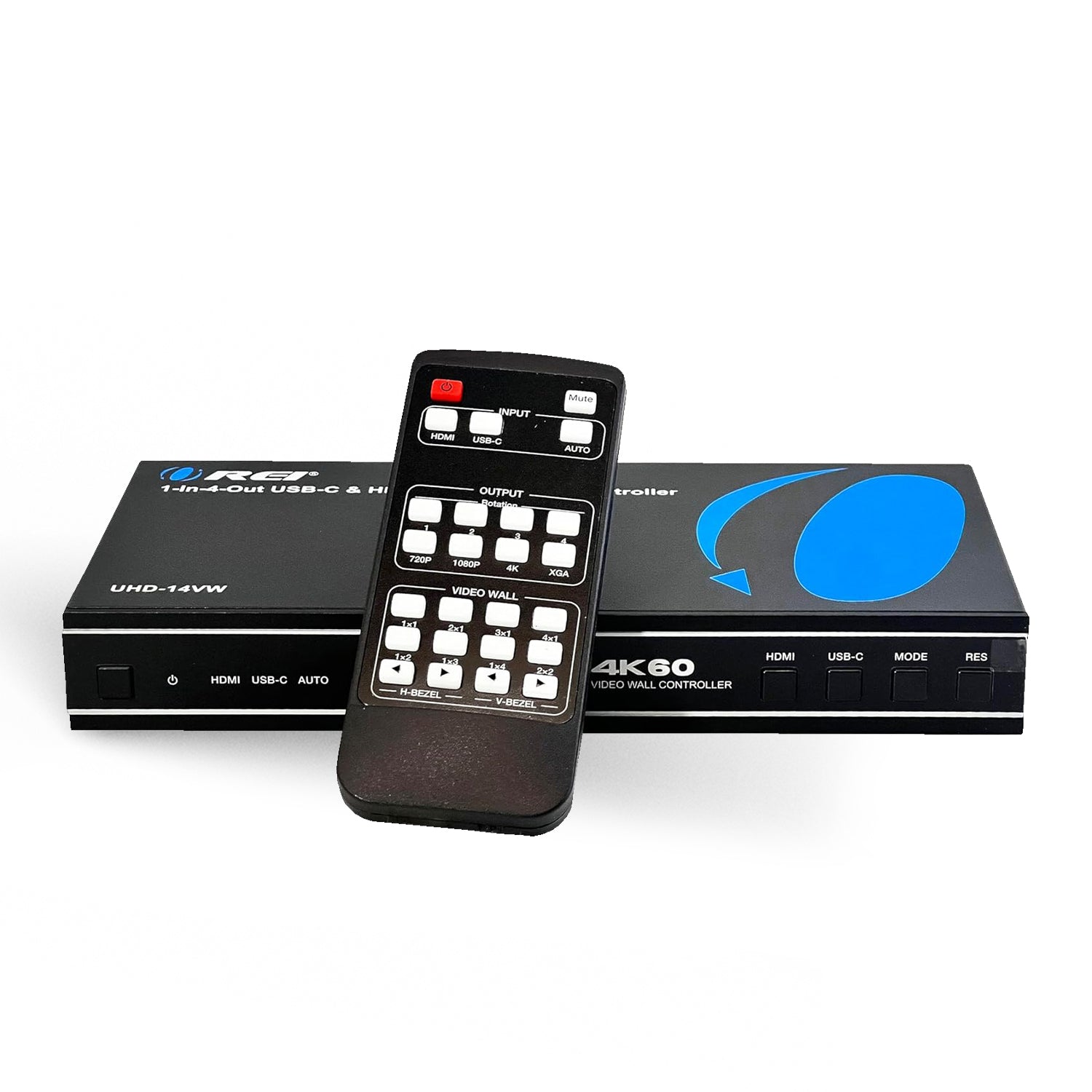 |
 |
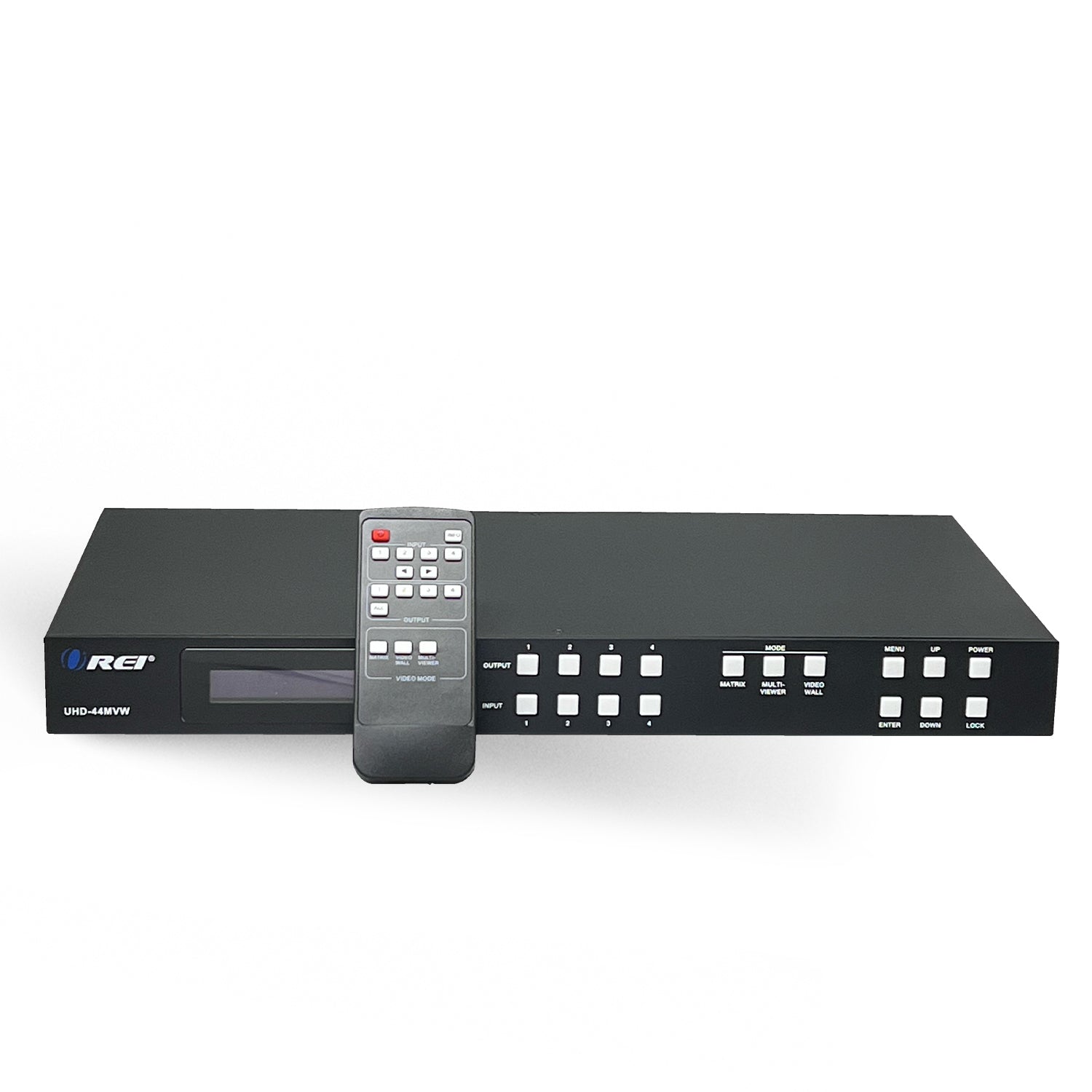 |
 |
 |
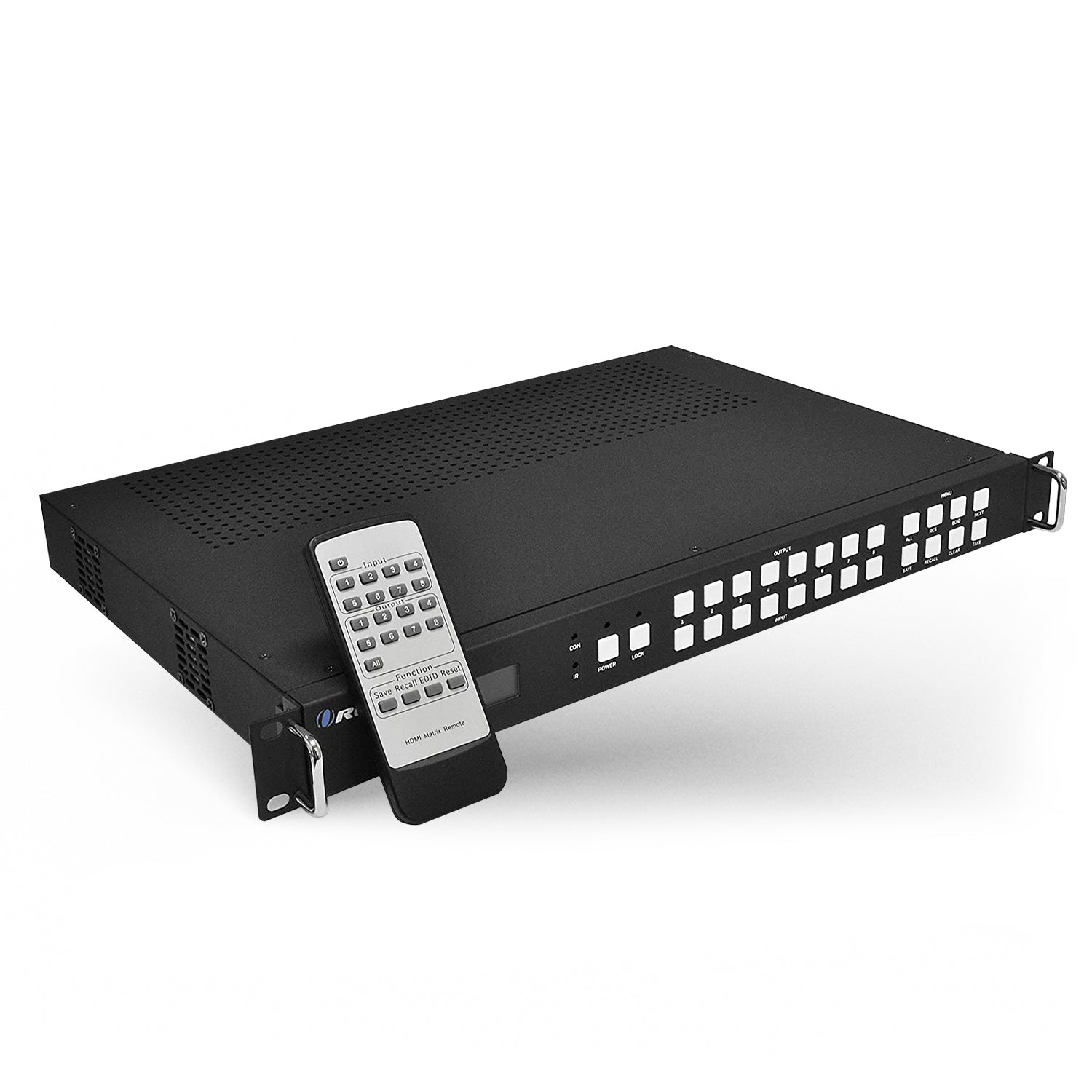 |
 |
| Model | UHD-14VW | UHD-204VW | UHD44-MVW | UHDS-404VW | UHD-404VW | UHD-808VW | UHDS-808VW |
| Input | 1xHDMI,1xUSB-C | 2xHDMI | 4xHDMI | 4xHDMI | 4xHDMI | 8xHDMI | 8xHDMI |
| Resolution | upto 4K@30Hz | upto 4K@60Hz | upto 4K@60Hz | upto 4K@60Hz | upto 4K@60Hz | upto 4K@60Hz | upto 4K@60Hz |
| HDMI compliance | HDMI 2.0 | HDMI 2.0 | HDMI 2.0 | HDMI 2.0 | HDMI 2.0 | HDMI 2.0 | HDMI 2.0b |
| HDCP compliance | HDCP 2.2 | HDCP 2.2 | HDCP 2.2 | HDCP 2.2 | HDCP 2.2 | HDCP 2.2 | HDCP 2.2 |
| Additional features | USB-C Input, 180-degree rotation | Bezel adjustment, 180-degree rotation | Multiview functionality, 180-degree rotation | Bezel adjustment, 180 degree rotation and RS-232 | Bezel adjustment, 180 degree rotation and RS-232 | Bezel adjustment, 180 degree rotation and RS-232 | Bezel adjustment, 180 degree rotation, RS-232 and Audio matrixing |
| Audio Extraction | Optical & L/R out | Analog Balanced & 3.5mm (L/R Toslink) | Optical & Analog Balanced | N/A | Analog Balanced & 3.5mm (L/R Toslink) | L/R out | Optical & Analog Balanced |
| Video wall modes | 8 | 7 | 9 Video Wall & 12 Multiview modes | 10 | 8 | 7 | 8 |
For more tips on setting up video walls and optimizing your AV experiences, feel free to visit our blog for more insights and guidance.


